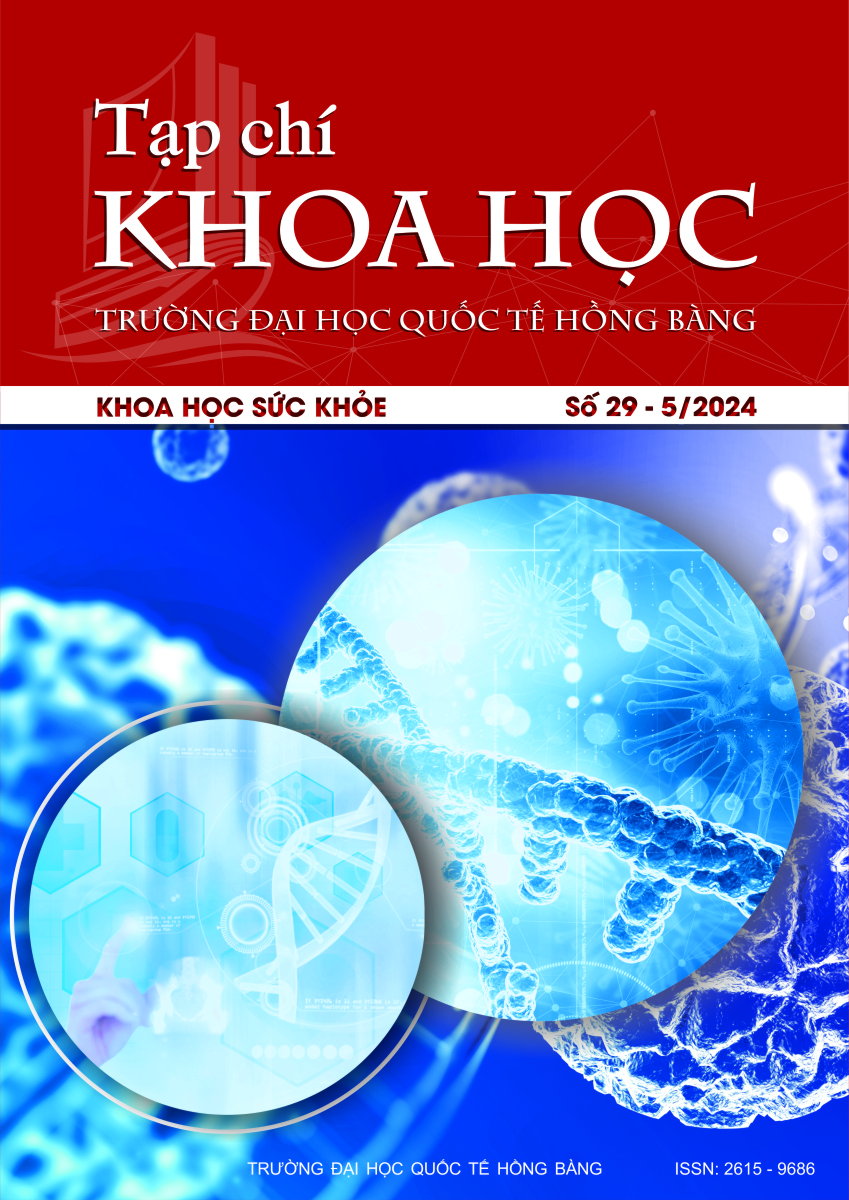Nghiên cứu công thức kem bôi da chứa nọc bò cạp Heterometrus laoticus họ scorpionidae
Các tác giả
DOI: https://doi.org/10.59294/HIUJS.29.2024.617Từ khóa:
tối ưu hóa, kem bôi da, nọc bò cạp Heterometrus laoticus, Design Expert, BCPharsoftTóm tắt
Đặt vấn đề: Thuốc kem kháng viêm là một dạng bào chế thông dụng, tác động tại chỗ, ít tác dụng phụ và hiệu quả cao. Nọc bò cạp đã được chứng minh có hiệu quả tác động giảm, đau kháng viêm, kháng ung thư... Tuy nhiên, chưa có cơ sở nào công bố việc nghiên cứu đưa nọc bò cạp vào dạng chế phẩm. Do đó, nghiên cứu bào chế công thức kem bôi da chứa 0.16% nọc bò cạp Heterometrus laoticus để làm phong phú sản phẩm giảm đau, kháng viêm trên thị trường. Mục tiêu nghiên cứu: Tối ưu hóa và bào chế công thức kem bôi da dựa trên ứng dụng phần mềm Design Expert và phần mềm BC Pharsoft. Phương pháp: Kem bôi da chứa 0.16% nọc bò cạp được điều chế bằng phương pháp phân tán nóng bằng máy khuấy cơ. Thăm dò và thiết kế công thức tối ưu bằng phần mềm Design Expert với mô hình D-Optimal, Kem bào chế được đánh giá về thể chất, độ dàn mỏng, kích thước giọt dầu. Dự đoán và kiểm chứng công thức tối ưu về tính đồng nhất qua 3 lô sản xuất, mỗi lô có khối lượng 1000g. Kết quả: Công thức tối ưu gồm 0.16% nọc bò cạp, 10% methyl salicylat, 5% menthol, 6.77% dầu parafin, 0.85% cetyl alcohol, 1.69% stearyl alcohol, 1.69% sápong trắng, 2% poloxamer 407, 2.8% Emulgade®, 1% benzyl alcol, 0.1% BHT, 10% propylen glycol, nước cất vừa đủ 100%, được bào chế bằng phương pháp phân tán nóng. Chế phẩm đồng nhất về công thức và quy trình qua kiểm chứng 3 lô, cỡ lô 1000g. Sản phẩm trắng mịn, bóng mượt, pH 6.4, độ dàn mỏng (1g/25cm2), kích thước giọt dầu dưới 3 µm. Kết luận: Kem bôi da chứa 0.16% nọc bò cạp đã được nghiên cứu thành công trên quy mô phòng thí nghiệm, có độ bền vật lý cao. Chế phẩm hứa hẹn là một sản phẩm có tiềm năng, mở ra nhiều triển vọng phát triển sản xuất trên quy mô công nghiệp.
Abstract
Background: Anti-inflammatory topical cream is a commonly used topical medication known as less adverse effects, and high efficacy. Scorpion venom have considerable pharmacological effects, such as anti-inflammatory, analgesic, and anticancer activity. However, there has been no published researchon incorporating scorpion venom into topical formulations. Therefore, the formulationof an anti-inflammatory topical cream containing scorpion venom is very essential to enhance the rangeof pain relief and anti-inflammatory products availableon the market.objective: The research focuseson developingoptimum formulations utilizing Design Expert software and BC Pharsoft software. Methods: A topical cream containing 0.16% scorpion venom is prepared for the hot dispersion method with a mechanical stirrer. Theoptimal formula is made by Design Expert software, with the D-Optimal model. The products are tested for physical properties, thinness, andoil droplet size. Subsequently, theoptimal formula is predicted and verified for uniformity across three batches, each weighing 1000g. Results: Products have been formulated with ingredients such as 0.16% venom, 10% methyl salicylate, 5% menthol, 6.77% paraffinoil, 0.85% cetyl alcohol, 1.69% stearyl alcohol, 1.69% white beeswax, 2% poloxamer 407, 2.8% Emulgade®, 1% benzyl alcohol, 0.1% BHT, and 10% propylene glycol, and water. The product is consistent in formula and process, as verified across three batches, each with a batch sizeof 1000 grams. The resulting cream is white, smooth, shiny, pH 6.4, thin spread (1g/25cm2),oil droplet size less than 3 µm. Conclusion: The study has successfully prepared a topical creamon a laboratory scale. The product will be monitored for stability and considered for productionon an industrial scale in the future.
Tài liệu tham khảo
[1] P. Valverde, T. Kawai, and M. A. Taubman, "Selective blockadeof voltage-gated potassium channels reduces inflammatory bone resorption in experimental periodontal disease," J Bone Miner Res, vol. 19, no. 1, pp. 155-64, 2004.
DOI: https://doi.org/10.1359/jbmr.0301213[2] L. Soroceanu, Y. Gillespie, M. B. Khazaeli, and H. Sontheimer, "Useof chlorotoxin for targetingof primary brain tumors," Cancer Res, vol. 58, no. 21, pp. 4871-9, 1998.
[3] T. V. Tran et al., "Anticoagulant activityof low-molecular weight compounds from Heterometrus laoticus scorpion venom," Toxins (Basel), vol. 9, no. 11, 2017.
DOI: https://doi.org/10.3390/toxins9110343[4] Trần Vũ Thiên, Nguyễn Thị Thùy Trang, Võ Phùng Nguyên, Nguyễn Đức Tuấn, Nguyễn Trung Kiên, Phạm Nguyên Đông Yên, Hoàng Ngọc Anh, "Khảo sát tác động kháng viêm và giảm đau của chế phẩm kem bôi da chứa nọc bò cạp Heterometrus laoticus," Tạp chí Y học TP. Hồ Chí Minh, Tập 21, số 1, 2017.
[5] A. N. Hoang et al., "Vietnamese Heterometrus laoticus scorpion venom: Evidence for analgesic and anti-inflammatory activity and isolationof new polypeptide toxin actingon Kv1.3 potassium channel," Toxicon, vol. 77, pp. 40-8, 2014.
DOI: https://doi.org/10.1016/j.toxicon.2013.10.027[6] R. Erviana et al., "Novel antimicrobial peptides from a cecropin-like regionof Heteroscorpine-1 from Heterometrus laoticus venom with membrane disruption activity," Molecules, vol. 26, no. 19, 2021.
DOI: https://doi.org/10.3390/molecules26195872[7] Bộ môn Bào Chế, Bào chế và sinh dược học (tập 2). NXB Y học, 2020.
[8] Bộ Y tế, Dược Điển Việt Nam 5. NXB Y học Hà Nội, 2017.
[9] Đặng Văn Giáp, Thiết kế & tối ưu hóa công thức và qui trình. NXB Y học, Hà Nội, 2002.
Tải xuống
Tải xuống: 269











